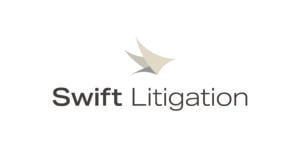Focus on: Corporate Due Diligence And Climate Justice: Towards A Framed Judicial Review And Limited Injunctive Power
Swift Litigation
 View Firm Profile
View Firm Profile
Courts are playing a growing role in climate litigation—but without replacing policymakers. Recent French rulings under the duty of vigilance law confirm a restrained judicial approach, focused on legal coherence rather than prescribing corporate action.
Overview:
CONVERGING TRENDS IN CLIMATE LITIGATION
1.1. Restrained judicial power over companies
1.2. Minimal judicial intervention against states
THE DUTY OF VIGILANCE JURISPRUDENCE REFLECTS THE SAME APPROACH
2.1. Framed review and limited remedies
2.1.1. A coherence-based review
2.1.2. A deliberately limited injunctive power
2.2. Can climate action be grounded in the Duty of Vigilance?
Climate litigation is on the rise. Courts are increasingly being asked to rule on the inaction of public authorities, the inadequacy of adopted measures, and the insufficiency of climate objectives set by States and corporations.
In France, several such cases have been brought under a pioneering “duty of vigilance” law, which requires large companies to identify and mitigate risks of serious harm to human rights, health, and the environment by implementing a vigilance plan. This plan must include risk mapping and appropriate preventive measures (Articles L. 225-102-1 and L. 225-102-2 of the French Commercial Code).
Companies targeted by these lawsuits are accused of either failing to identify climate-related risks, or of responding inadequately. Claimants are demanding judicial orders that compel companies to integrate climate considerations into their vigilance plans and to implement concrete mitigation actions.
These proceedings raise fundamental questions about the scope of judicial review and the authority of courts to compel specific measures. Comparative trends in climate litigation (section 1 below) find a counterpart in the initial French rulings under the duty of vigilance law—which were delivered in non-climate cases—and confirm the judiciary’s limited and structured role (section 2 below).
CONVERGING TRENDS IN CLIMATE LITIGATION
Across jurisdictions, courts tend to adopt a cautious and limited approach. In cases against companies, their injunctive powers are restrained (see 1.1 below), and in cases against the State, the separation of powers imposes even greater limitations (see 1.2 below).
1.1. Restrained judicial power over companies
When faced with claims against companies, courts may assess the consistency of corporate climate commitments but stop short of mandating specific actions. Such decisions remain within the strategic discretion of the company.
In the UK, a derivative action brought by shareholders against Shell’s board for failing to adopt a sufficiently ambitious climate strategy was dismissed. Through decisions issued on 12 May, 24 July, and 15 November 2023, the High Court reiterated that directors are responsible for making complex decisions involving the balancing of competing interests—a function that courts should not take over unless there is clear evidence of an abuse of discretion (High Court of Justice of England and Wales, No. BL-2023-000215).
In the Netherlands, in 2021, the District Court of The Hague ordered Shell to reduce its emissions by 45% by 2030 under a general duty of care but emphasized that the company had full autonomy to determine how to meet this target (26 May 2021, No. C/09/571932). This judgment was overturned on appeal in 2024, with the Court of Appeal stressing the lack of a universally agreed trajectory and reaffirming Shell’s discretion to shape its climate policy, provided it remains consistent with international goals, including the Paris Agreement (12 Nov. 2024, No. 200.302.332/01).
In both instances, the courts assessed coherence but refrained from prescribing implementation details—a pattern also echoed in litigation against States.
1.2. Minimal judicial intervention against states
In climate claims against governments, courts are particularly mindful of the separation of powers.
In France, the Grande-Synthe case illustrates this judicial caution. The Conseil d’État ordered the Prime Minister to adopt “all useful additional measures” to meet climate targets but deferred to the government’s discretion as to the nature of these actions (CE, 19 Nov. 2020; 1 July 2021; 10 May 2023, No. 467982). Similarly, in the French climate case known as L’Affaire du Siècle (Case of the Century), the Paris Administrative Court recognised the State’s responsibility for ecological damage but reiterated that enforcing corrective action remains the responsibility of the executive branch.
Thus, French administrative courts limit their role to assessing outcomes and trajectories, without interfering in policy decisions. This approach ensures that judicial review remains effective while maintaining institutional balance.
The European Court of Human Rights adopted a similar stance in its ruling on KlimaSeniorinnen Schweiz (ECtHR, 9 Apr. 2024, No. 53600/20), a case brought by a Swiss association of elderly women concerned about the health impacts of climate change. While recognizing States’ obligations to set climate targets, the court emphasized (notably §412 and §513) that implementation strategies remain within the legislative and executive domain.
In Spain, the Supreme Court refused to order the government to raise its targets for reducing greenhouse gas emissions. The court stated that these targets were in line with European goals, but also that such decisions involve complex trade-offs beyond the judiciary’s mandate (24 July 2023, No. 1079/2023).
In the United States, federal courts often use the “political question” doctrine to dismiss climate cases that would require them to design or supervise governmental climate policy. In the case of Juliana v. United States (US Court of Appeals for the Ninth Circuit, 17 Jan. 2020, No. 18-36082), for example, the court concluded that even in the face of clear governmental inaction, it lacked the authority to impose a detailed climate framework.
Thus, across jurisdictions, courts generally refrain from substituting their judgement for that of public or private actors, limiting their role to reviewing coherence and compliance. This trend is now reflected in the first French decisions rendered under the duty of vigilance framework.
THE “DUTY OF VIGILANCE” JURISPRUDENCE REFLECTS THE SAME APPROACH
Although it has not yet been applied to climate matters, recent French rulings under the duty of vigilance law confirm that judicial oversight remains framed and that injunctive powers are limited (see 2.1 below)—assuming such litigation is even permissible on climate grounds (see 2.2 below).
2.1. Framed judicial review and limited remedies
In interim proceedings, judges may only act in clear-cut situations, i.e.: absence of serious dispute, manifestly unlawful conduct, or imminent harm (Art. 834 and 835 of the French civil code). They only get involved in exceptional cases, such as when there is a complete lack of a vigilance plan or when the measures are so inadequate that they are essentially non-existent. (Paris Judicial Court, 28 Feb. 2023, Nos. 22/53942 and 22/53943).
Substantive review falls to the trial judge, whose role is essentially one of formal and functional scrutiny (2.1.1 below), accompanied by a narrowly circumscribed power to compel action (2.1.2 below).
2.1.1.A coherence-based review
The judge will assess whether the plan complies with legal requirements—risk mapping, regular assessments, preventive measures, whistleblowing mechanisms, and monitoring systems.
Vigilance plans must be precise. Vague statements and generic policies are rejected. A synthetic, operational approach is allowed. The aim remains to provide concrete and useful information (Paris Judicial Court, 5 Dec. 2023, No. 21/15827; Paris Court of Appeal, 17 June 2025, No. 24/05193).
For instance, risk mapping, need not be exhaustive, but it must prioritise risks based on severity and likelihood, and identify relevant contributing factors. Crucially, the mapping informs the rest of the plan: a flawed mapping may invalidate even otherwise sound measures.
For example, an assessment tool applied to suppliers was deemed ineffective because it did not establish a clear identification of relevant risks. Similarly, preventive measures, however concrete, are insufficient if they are not linked to initially identified risks.
The same logic applies to monitoring systems: they should be based on indicators tailored to specific risks and should allow for a meaningful evaluation of implementation.
Courts also scrutinise how the plan was developed. For instance, when the law requires consultation with trade unions regarding alert mechanisms, judges will demand proof of substantive engagement; mere invitations or meeting slides will not suffice.
Ultimately, the judge reviews whether the plan integrates “concrete, adequate, and effective” measures that are logically consistent with the identified risks. However, their ability to prescribe specific steps remains limited.
2.1.2. A deliberately limited injunctive power
According to the Paris Judicial Court, the duty of vigilance establishes a system of corporate self-regulation under judicial supervision—but not one in which courts dictate specific operational steps (5 Dec. 2023, No. 21/15827). Judges cannot substitute their judgment for that of the company, which retains autonomy in determining appropriate measures. The Court of Appeal declined to rule on this point (17 June 2025, No. 24/05193).
This approach is consistent with the legislative text and debates, which confirm that it is primarily the company’s responsibility to define vigilance measures, subject to judicial scrutiny.
It is also consistent with legal commentary: while companies must account for their actions and results, they should be free to determine their own methods. Much as they have done in the climate cases discussed above, courts act as guardians of coherence, not as environmental planners.
While some commentators are concerned that this view undermines the effectiveness of injunctive relief, others believe that it is appropriate, in that it reinforces companies’ responsibility and respects judicial limits.
This interpretation also reflects the general principles of French corporate law: unless extraordinary circumstances arise, such as imminent peril justifying the appointment of a court administrator, courts cannot interfere in strategic business decisions (Paris Court of Appeal, 25 Apr. 2024, No. 23/15608; Cass. Com., 22 Sept. 2021, No. 19-18.936).
The same restraint applies in other legal areas such as contract law (except in narrow cases like hardship under Art. 1195 Civ. Code), in family law (where courts only intervene in specific cases of serious difficulty), and in administrative law (where courts can enforce compliance but cannot define public policy – see CE, 11 Oct. 2023, Nos. 467771 and 467781; CE, 12 Mar. 2025, No. 488642).
In all these areas, the judge’s role is to review, not to make decisions on behalf of the responsible party.
2.2 Can climate action be grounded in the duty of vigilance?
The question of whether Article L. 225-102-1 can serve as a legal basis for climate litigation remains unanswered. While it obliges companies to prevent serious environmental harm, it is unclear whether this extends to climate risks.
A purposive interpretation—based on climate urgency—argues for inclusion. However, a narrower reading may prevail, especially given that the law was initially designed to address localised, concrete harms (e.g., oil spills), rather than diffuse, global phenomena.
The EU Corporate Sustainability Due Diligence Directive (CSDDD) reinforces this distinction. It distinguishes between general due diligence obligations (Articles 7–16) and the obligation to adopt a climate transition plan (Article 22), the latter of which is not subject to civil liability mechanisms.
The Paris Court of Appeal, in its 17 June 2025 decision (No. 24/05193), suggested that the EU Directive should guide French courts when interpreting the duty of vigilance law, which must be borne in mind especially in light of potential changes under the EU “Omnibus” legislative package.
Ultimately, it will be up to the courts to determine how, and indeed if, climate duties fit within the vigilance framework. Aligning French law with EU legislation would promote legal certainty, an outcome publicly supported by many major companies (see joint letter dated 17 Jan. 2025 from Unilever, Nestlé, IKEA, Ferrero, Primark, etc.).
Conclusion
Faced with the urgency of climate change and growing pressure on both public authorities and private actors, the judiciary stands at a crossroads.
Some expect the courts to compensate for political inaction or to compel companies to accelerate their ecological transition. However recent case law, particularly under the French duty of vigilance, points to a more measured role.
Judges are neither passive observers nor architects of environmental policy. Instead, they act as guarantors of legality, ensuring that obligations are respected, measures remain coherent, and justifications are substantiated.
Without substituting themselves to policymakers or corporate leaders, the courts can enforce transparency, coherence, and accountability. This measured yet firm conception of judicial authority reinforces the judiciary’s legitimacy in an area as sensitive as climate justice.
By SWIFT LITIGATION: Julien Martinet, Founding Partner and Marius Chapon, Lawyer

